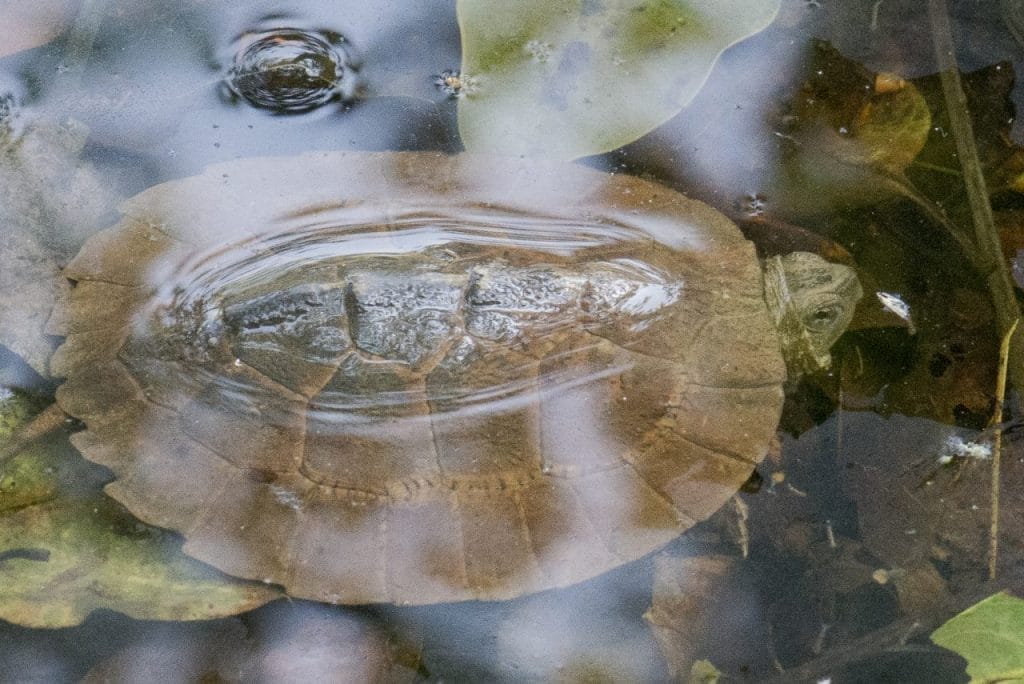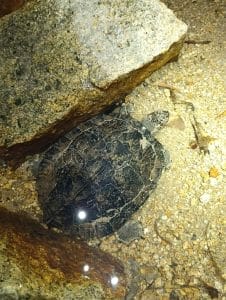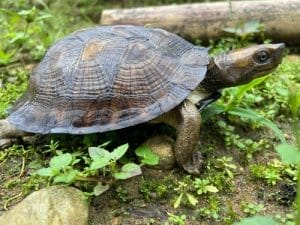Cyclemys gemeli (Assam leaf turtle)
Home > Turtle Database > Cyclemys gemeli (Assam leaf turtle)
Cyclemys gemeli is a lesser-known species of Assam leaf turtle, often recognized for its brownish, heavily patterned carapace and distinctive shell shape. This semi-aquatic turtle is primarily found in certain regions of Southeast Asia, where it inhabits freshwater bodies surrounded by dense vegetation.
Native To These Regions
Arunachal Pradesh (India), Assam (India), Bangladesh, Manipur (India), Meghalaya (India), Mizoram (India), Myanmar, Nagaland (India), Tripura (India)Native Turtle Species Map – Find Turtles by Region
Scientific Classification
- Kingdom: Animalia
- Phylum: Chordata
- Class: Reptilia
- Order: Testudines
- Family: Geoemydidae
- Genus: Cyclemys
- Species: Cyclemys gemeli
Common Names
- Assam Leaf Turtle
This Hilarious Turtle Book Might Know Your Pet Better Than You Do
Let’s be real—most turtle care guides feel like reading a textbook written by a sleep-deprived zookeeper.
This one’s not that.
Told from the snarky point of view of a grumpy, judgmental turtle, 21 Turtle Truths You’ll Never Read in a Care Guide is packed with sarcasm, sass, and surprisingly useful insights.
And hey—you don’t have to commit to the whole thing just yet.
Grab 2 free truths from the ebook and get a taste of what your turtle really thinks about your setup, your food choices, and that weird plastic palm tree.
It’s funny, it’s honest, and if you’ve ever owned a turtle who glares at you like you’re the problem—you’ll feel seen.
Identification
Description:
Cyclemys gemeli has a slightly domed carapace with a serrated rear edge and a distinctive keel running along the center. The carapace color ranges from dark brown to olive, with darker streaks or patterns, providing excellent camouflage among leaf litter. The plastron is often pale with dark blotches.
Sexual Dimorphism:
Males tend to have a more elongated tail and concave plastron, while females have a flatter plastron and shorter tail.
Check more turtles from the Cyclemys genus
Native Origin and Distribution
Geographical Range:
This species is predominantly found in Northeast India, particularly in Assam, as well as parts of Myanmar and possibly adjacent regions.
Preferred Habitat
Cyclemys gemeli prefers slow-moving freshwater environments such as ponds, streams, and marshes, often in areas with abundant vegetation where it can forage and find shelter.
Behavior
Feeding Habits:
This omnivorous species feeds on a diet of aquatic plants, small invertebrates, and occasionally fruits that fall into the water. It is primarily crepuscular, being most active during dawn and dusk.
Predators:
Natural predators include birds of prey, large fish, and mammals. Juveniles are particularly vulnerable due to their smaller size.
Reproduction
Breeding Season:
The breeding season typically occurs during the monsoon period, with increased activity as water levels rise.
Reproductive Method:
Females lay small clutches of eggs in sandy or muddy areas near water. The eggs incubate for several months before hatching.
Conservation
Extinction Status:
Cyclemys gemeli is currently listed as ‘Vulnerable’ on the IUCN Red List due to habitat loss and illegal collection for the pet trade.
Threats:
Major threats include habitat destruction from deforestation and water pollution, as well as over-exploitation for the pet trade.
Conservation Measures:
Conservation efforts include habitat protection, stricter enforcement of trade regulations, and breeding programs in captivity.
Economic Importance
While not widely recognized in the global pet trade, Cyclemys gemeli is occasionally sought after by collectors, which has contributed to its declining wild populations.
Interesting Facts
- Cyclemys gemeli has a unique ability to close its shell tightly, which helps protect it from predators.
- The species is named in honor of Dr. Uwe Fritz, a German herpetologist who significantly contributed to the study of turtles.

About Author
Muntaseer Rahman started keeping pet turtles back in 2013. He also owns the largest Turtle & Tortoise Facebook community in Bangladesh. These days he is mostly active on Facebook.















